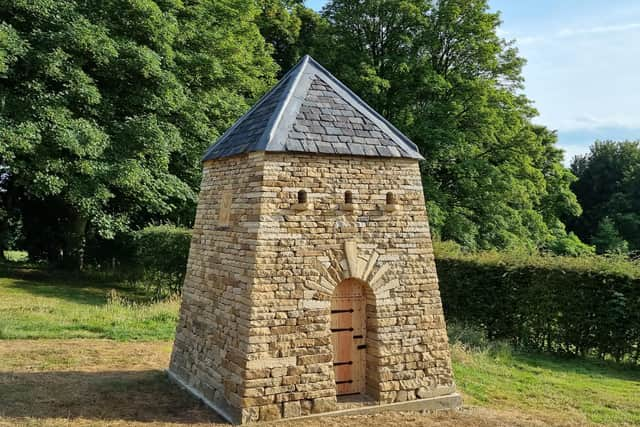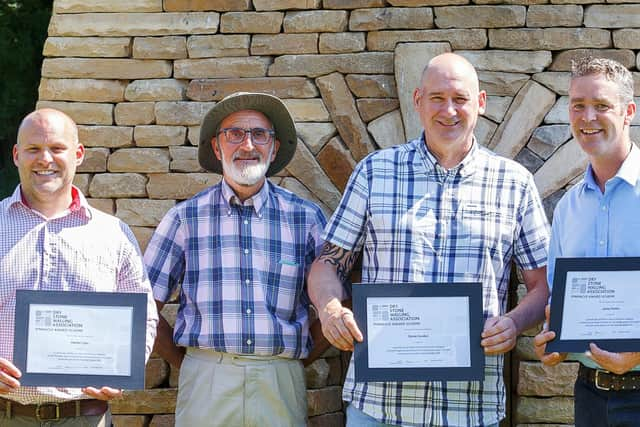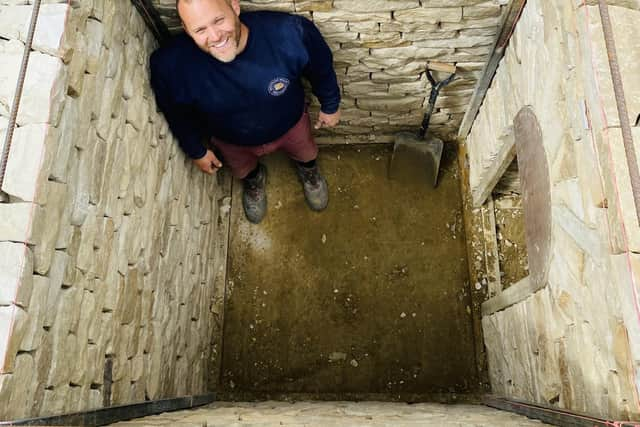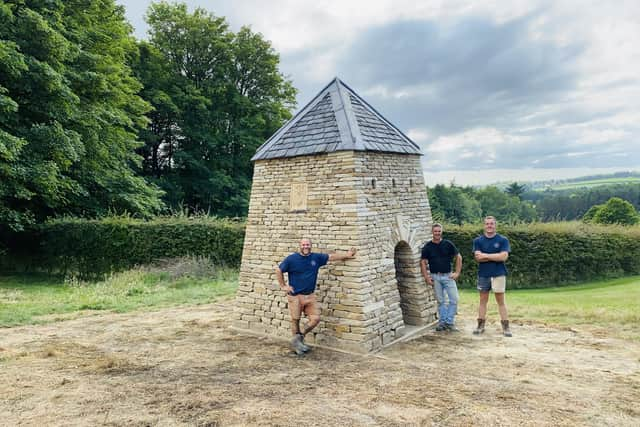'World’s finest dove hotel': Stunning dry stone walling masterpiece in Scotland given prestigious award
It is a sculpture that will see flocks of birds nesting inside as it stands proud for hundreds of years to come.
Dubbed the “world’s finest dove hotel” by designer and head builder James Parker, the stunning piece of craftmanship was commissioned by Sir Fraser and Lady Morrison of Teasses Estate in Fife to celebrate the couple’s 50th wedding anniversary.
Advertisement
Hide AdAdvertisement
Hide AdThe free-standing structure, which took more than 1,300 working hours and 40 tonnes of stone to build over the course of two months, was submitted for consideration under the Dry Stone Walling Association’s (DSWA) Pinnacle Award Scheme.
The scheme has different tiers for recognising outstanding projects using the dry stone walling skill.
Mr Parker, 44, and the team at Drystone Walling Perthshire – Martin Tyler, Stevie Gordon and Findlay Reade – received the DSWA’s certificate of merit which is the first award of its kind to be presented in Scotland since 2006.
And it is only the seventh award to be made north of the border under the scheme since it was established in 1994, with previous winners including a Packhorse Bridge near Dunkeld and Ratho Adventure Centre.


The dovecot, otherwise known as doocot in Scots, stands more than four metres high and has hatches and nest boxes for the resident doves.
Mr Parker documented the building of the structure on video, with clips showing the hair-raising moment the wooden pillars supporting the stone were pulled out. But they came away smoothly showing the stunning stonework beautifully locked tightly in place.
Teasses Estate gardens are open to the public so anyone wishing to see the stone masterpiece can do so.


"A project like this is a once in a lifetime experience; an opportunity to demonstrate skills and techniques in dry stone walling and to create a structure that will exist for many, many years,” Mr Parker said.
Advertisement
Hide AdAdvertisement
Hide Ad“To be recognised by the DSWA for the doocot is a real honour.”
He added: “Hopefully there will be some grateful doves.”


Sean Adcock, of the DSWA, said the scheme seeks to commission work such as the doocot, adding: “It is encouraging to see young wallers and designers working on exciting projects such as these that can be enjoyed by the public for many years to come.”
Mr Tyler, 37, who has been working in the profession for some five years, previously spoke to The Scotsman about his passion for the craft and how he wants to keep working on inspiring others into the trade to secure its place in Scotland’s future.
Known more commonly as dry stane dykes north of the border, the number of people using the heritage skill to build such structures has plummeted over the years as less young people are turn to a career in traditional boundary maintenance.
DSWA figures in 2021 showed more than 70 per cent of the UK’s historic dry stone walls lay derelict.
The decline is due to a mixture of reasons; a lack of funding, a change in farming practices and an ageing population of craftsmen fit for the task.


But as the Fife doocot shows, there is more to the craft than simply maintaining the traditional walls on upland farms.
The skill can build modern structures, stone circles and elegant walls and sculptures for people’s gardens.
Mr Tyler said: “It’s been really exciting to be part of winning this award, and hopefully it will inspire more projects like it.”
Comments
Want to join the conversation? Please or to comment on this article.
